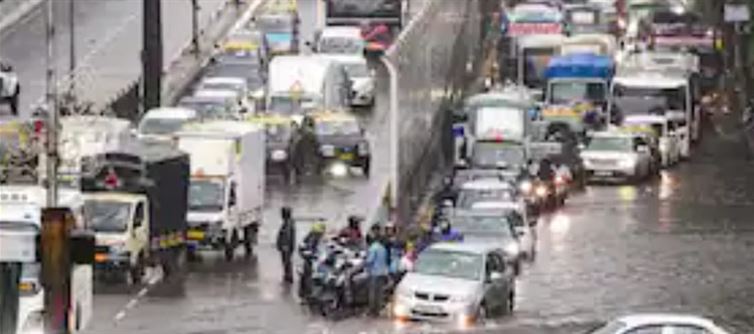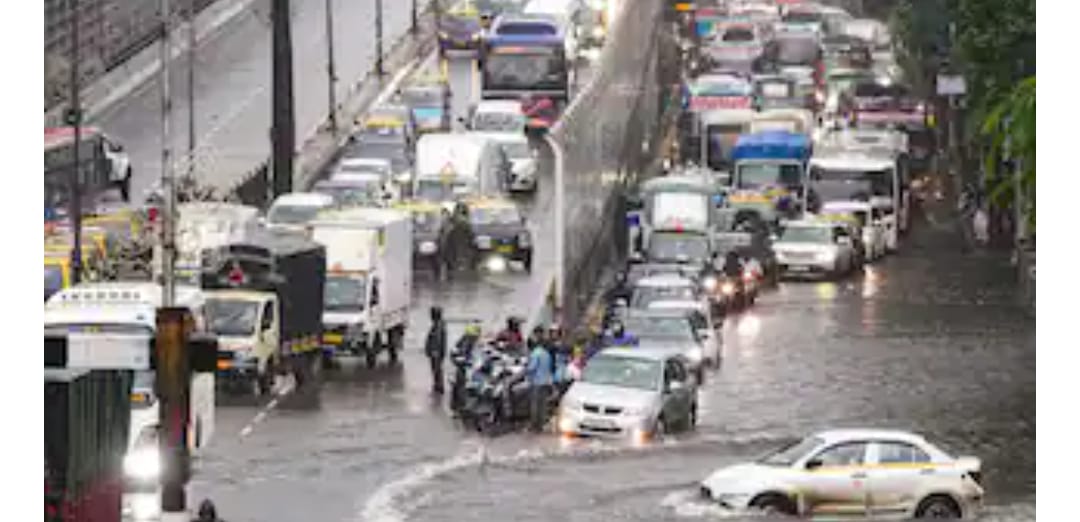
Mumbai experienced monsoon arrival 16 days ahead of schedule, marking the earliest onset since 1950. The heavy rains caused widespread waterlogging, disrupted train services, and flooded a metro station.

The southwest monsoon made a dramatic entry into mumbai on Monday, arriving 16 days ahead of its usual schedule, marking the earliest onset in the city since 1950, according to the india Meteorological Department (IMD). The heavy downpour led to widespread waterlogging, disruption of suburban train services, and flooding at a key underground metro station.
As per the IMD, the monsoon reached mumbai on May 27, a significant deviation from its typical arrival date of june 11. “This is the earliest onset in mumbai in the last 75 years,” IMD scientist sushma Nair told news agency PTI, adding that the monsoon had last arrived this early in 1956, with similar dates recorded in 1962 and 1971.
The season’s onset over the indian mainland began in kerala on Saturday, making it the earliest since 2009 when it hit the southern state on May 23. The IMD clarified that an early monsoon onset does not directly correlate with the total seasonal rainfall due to large-scale variability influenced by global and regional factors.
According to IMD’s Mumbai office, historical data since 1950 confirms the exceptional early arrival this year. Last year, the monsoon reached mumbai on june 25. In previous years, it arrived on june 11 2022, june 9 in 2021, june 14 in 2020, and again on june 25 in 2019.
Mumbai's Aqua Line Flooding Leads To Suspension Of Ops
While the monsoon brought relief from the summer heat, it also led to significant civic challenges. Operations on Metro Line 3, also known as the aqua Line, were suspended between acharya Atre Chowk and Worli due to flooding at the underground acharya Atre Chowk station.
In a statement, the mumbai Metro rail Corporation (MMRC) said, “Due to the sudden and intense rainfall today, water seepage was reported at the under-construction entry/exit structure of acharya Atre Chowk station along Dr Annie Besant Road. The incident occurred when the RCC water-retaining wall constructed at entry/exit collapsed due to a sudden ingress of water from an adjoining utility.” As a precaution, services between Worli and acharya Atre Chowk were temporarily halted, though trains between Aarey JVLR and Worli remained operational.
Central Railway services, Roads Impacted In mumbai Rains
The Brihanmumbai Municipal Corporation (BMC) reported the highest rainfall at Nariman Point fire Station with 104 mm recorded between 9 am and 10 am. Other locations included A Ward office (86 mm), Colaba pumping station (83 mm), and Municipal Head office (80 mm).
Heavy rains also impacted Central Railway services, with tracks inundated at Masjid, Byculla, Dadar, Matunga, and badlapur stations, causing delays during peak hours. Western Railway, however, said its services ran normally, although passengers at Kandivali station reported announcements of 15-20 minute delays due to “technical” reasons.
Vehicular traffic slowed across waterlogged roads in areas such as King’s Circle, Mantralaya, Dadar TT East, Parel TT, Kalachowki, Wadala, Hindmata, Kemps Corner, Churchgate, Chinchpokli, and Dadar. The civic-run KEM Hospital in Parel was among the many public spaces affected.
The IMD had earlier forecast thunderstorms with lightning, intense spells of rain, and gusty winds reaching 50-60 kmph at isolated locations in Mumbai. Light to moderate rainfall is expected to continue over the next 24 hours.
Maharashtra Deputy cm Ajit Pawar Visits Baramati To Assess Damage
In a related development, maharashtra Deputy chief minister Ajit Pawar visited Baramati tehsil in pune district to assess damage caused by unseasonal rains on Sunday. He described the rains as “unprecedented for May”. According to district authorities, rainwater entered homes in 70 villages in Indapur and 150 homes in Baramati, prompting immediate evacuation efforts.
The National Disaster Response Force (NDRF) confirmed it had deployed two specialized teams in Baramati and Indapur for rescue and relief operations. A stretch of the Pune-Solapur highway near Indapur was briefly closed due to flooding but was reopened once the waters receded.
The monsoon plays a vital role in India’s agriculture-driven economy, supporting drinking water supply, hydropower, and irrigation. Agriculture sustains the livelihood of nearly 42 per cent of the population and contributes 18.2 per cent to the national GDP.




 click and follow Indiaherald WhatsApp channel
click and follow Indiaherald WhatsApp channel